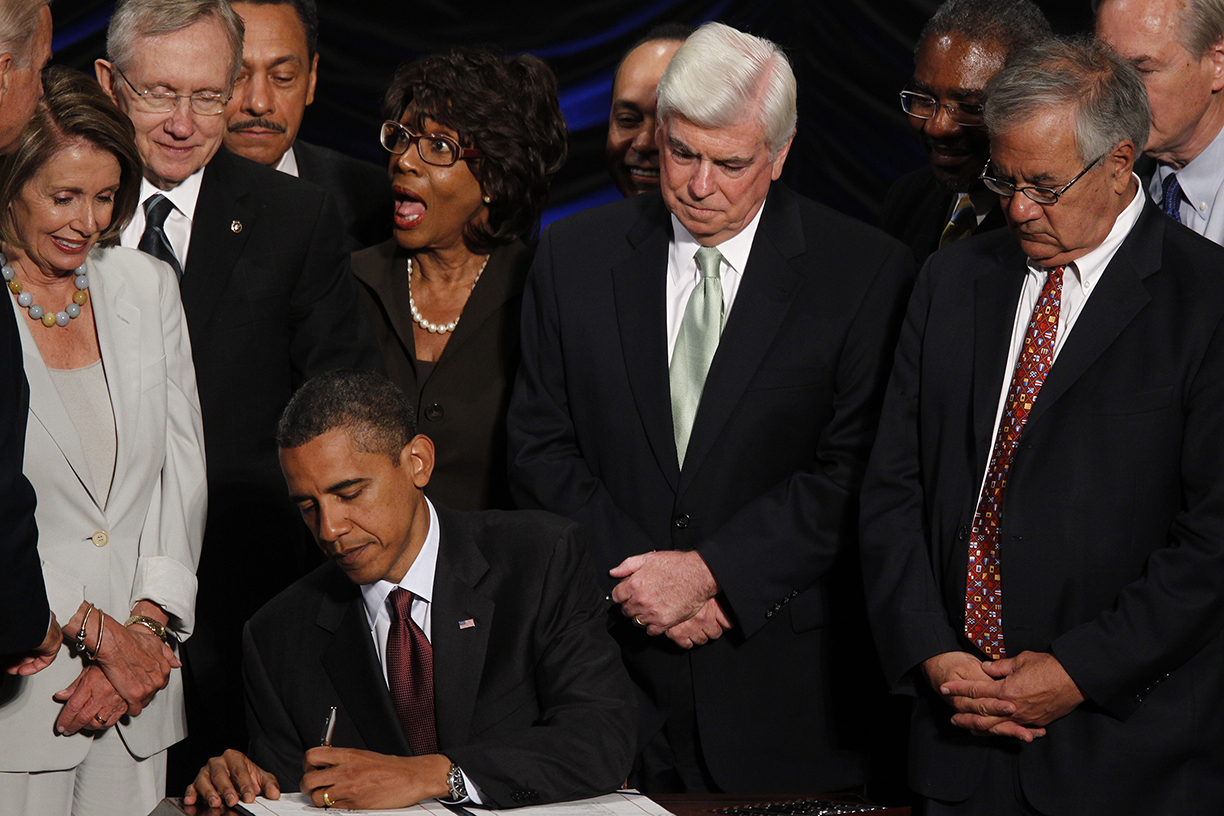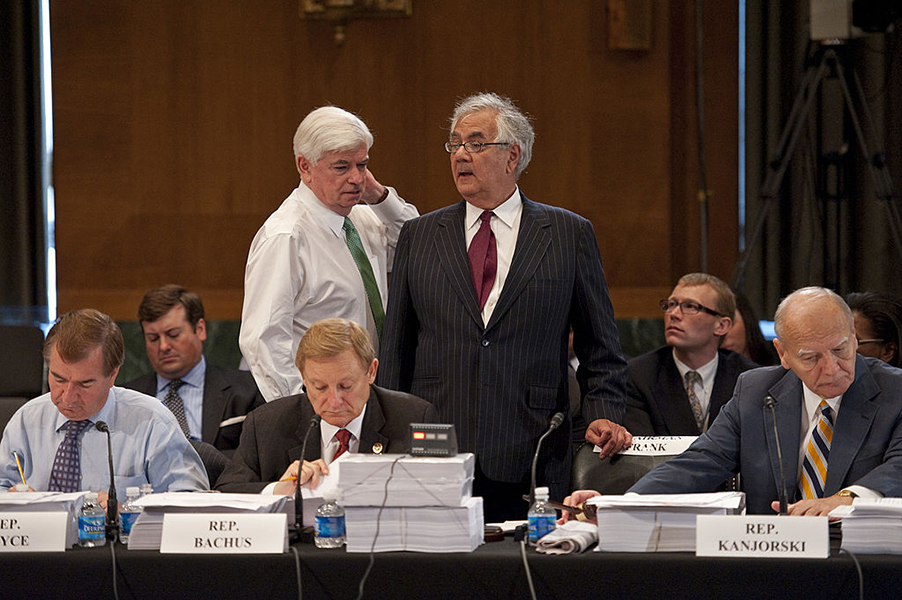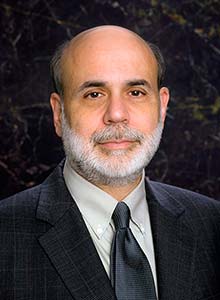Dodd-Frank Wall Street Reform and Consumer Protection Act of 2010
July 21, 2010

While a number of factors led to such a severe recession, the primary cause was a breakdown in our financial system. It was a crisis born of a failure of responsibility from certain corners of Wall Street to the halls of power in Washington. For years, our financial sector was governed by antiquated and poorly enforced rules that allowed some to game the system and take risks that endangered the entire economy.
Unscrupulous lenders locked consumers into complex loans with hidden costs. Firms like AIG placed massive, risky bets with borrowed money. And while the rules left abuse and excess unchecked, they left taxpayers on the hook if a big bank or financial institution ever failed.
--President Barack Obama, from prepared remarks at the signing ceremony for the Dodd-Frank Wall Street Reform and Consumer Protection Act, July 21, 20101
Scholars, practitioners, and casual observers will debate for years to come the precise causes of the 2008 financial crisis. They need not agree with President Obama's broad description of those causes, however, to understand that it summarizes how legislators perceived those causes in 2009 and 2010, when members of Congress began to craft the Dodd-Frank Act. Through its wide-ranging prescriptions for everything from mortgage lending to shareholder voting to derivatives clearing, and despite the fact that few congressional Republicans supported it, Dodd-Frank reveals where Congress saw flaws in the US financial system.
On the day he signed Dodd-Frank into law, President Obama tried to distill some of those flaws and place them into a few broad categories. First, he described inadequate prudential supervision and regulation, noting how "our financial sector was governed by antiquated and poorly enforced rules that allowed some to game the system and take risks that endangered the entire economy." Second, he referred to bailouts, those government loans, payments or guaranties that "left taxpayers on the hook if a big bank or financial institution ever failed." Finally, he cited consumers' vulnerability to sharp practices, such as when "lenders locked consumers into complex loans with hidden costs." These broad categories offer a simple but useful way to consider Dodd-Frank and its responses to the crisis.
"Antiquated and poorly enforced rules." Rulemaking, on-the-ground examination and inspection, and enforcement actions are the ways regulatory agencies make sure financial institutions operate safely and soundly. The financial crisis revealed how these activities, generally referred to as prudential supervision and regulation, sometimes failed to keep up with innovations in the financial marketplace or financial institutions' reckless behaviors. As evidence, some members of Congress pointed to eroded mortgage lending standards, others to unchecked and opaque securitization, still others to deregulation and the mingling of traditional banking and securities investment. Many cited all of the above and then some. Congress didn't hesitate to hold the regulatory agencies responsible, either, whether because these watchdogs didn't appreciate the severity of the problems afflicting the residential housing market, failed to rein in the securities market, or allowed financial institutions to carry too little capital and too much debt.

In response, Dodd-Frank does several things:
- It imposes more stringent prudential standards—including tougher requirements for capital, leverage, risk management, mergers and acquisitions, and stress testing—on bank holding companies and other financial firms whose failure could threaten the stability of the US financial system.
- It gives the Federal Reserve more authority to scrutinize the activities of nonbank companies.
- It requires more transparent trading and clearing of derivatives and, through the so-called "Volcker Rule," prohibits insured depository institutions, like commercial banks, from dealing in derivatives for their own account.
- It requires banks, lenders, and others, whenever they securitize an asset, to hang on to a portion of the credit risk.
- And to help ensure regulators don't lose sight of the big picture, it establishes the Financial Stability Oversight Council, whose membership includes the heads of all the financial regulatory agencies. The Council gives regulators a forum to compare notes, scan the nation's financial system for signs of trouble, and identify financial firms that could threaten US financial stability.
"Taxpayers on the hook." When the federal government facilitated the sales of firms like Wachovia and Bear Stearns, lent money to firms like AIG, and bought or insured bank assets through programs like TARP, it was deploying public money to bail out private companies. These efforts helped prevent a cascade of sudden, disorderly corporate collapses, but they also absorbed losses those companies and their creditors would've otherwise sustained. By saving companies and creditors from themselves, these efforts, in effect, were bailouts. These bailouts often involved very large, complex, and interconnected financial firms, and as a result the idea of "Too Big To Fail" became part of the public discourse. "Too Big To Fail" is shorthand for the troublesome relationship between the very largest corporations, their creditors, and the federal government. When these corporations become sufficiently large or complex or interconnected with other firms, the marketplace assumes the government, for fear that the corporations' failures would have catastrophic domino effects, will probably prop them up, and creditors, who understand this, lend to those corporations more cheaply. Congress concluded it had to untangle this knot of large financial institutions, near-systemic financial collapse, privatization of gain, and socialization of loss.
To help failing firms fail without threatening US financial stability and to help keep taxpayers off the hook, Dodd-Frank created new powers and crimped old ones:
- The most important new power is the Orderly Liquidation Authority, a way to take systemically important nonbank financial firms that are on the verge of collapse, place them in government receivership, and unwind them in a way that insulates the US economy from the effects of their collapse. Dodd-Frank even announces that "Taxpayers shall bear no losses" in the process. To help accomplish this, it saddles the excess costs of these orderly liquidations on large financial companies.
- Meanwhile, the Federal Reserve loses some autonomy to extend emergency credit. Dodd-Frank allows the Fed to make emergency loans but only through programs that are broadly available to many firms, not to a single firm.
- Dodd-Frank also requires large banks and other financial institutions to submit so-called "living wills," documents designed to explain to the regulatory agencies how the firms would deal with their own demise in the absence of extraordinary government support.
"Complex loans with hidden costs." In the years before the crisis, house prices steadily rose and lending standards steadily loosened. Consumers borrowed without demonstrating their ability to repay. Lenders extended complicated, interest-only, adjustable mortgages to borrowers who often didn't understand them and couldn't afford them. All the while, securitizers bundled these mortgages into securities, which the secondary market hungrily ate up. These practices may have seemed sustainable when home prices were rising; they proved catastrophic once prices began to decline. Mortgage fraud only made the problem worse. Unable to keep up or refinance, borrowers by the millions defaulted or found themselves stuck with mortgage debts exceeding their houses' worth. Many in Congress watched the resulting foreclosure crisis and concluded the time had come for a new regulatory agency dedicated solely to consumer protection in the financial marketplace.
In response, Dodd-Frank established a new regulatory agency dedicated to financial consumer protection and prohibited many of the lending practices that proliferated in the years before the crisis:
- The new agency is the Bureau of Consumer Financial Protection, which has the power to enforce most federal financial consumer protection laws. The Bureau also has broad new consumer protection authority over medium-sized and larger banks and financial companies, including powers to regulate basic financial transactions like deposit taking and check cashing and to set and enforce rules against "abusive" acts or practices.
- Dodd-Frank requires lenders to verify a mortgage borrower's ability to repay a loan and establishes the concept of "qualified mortgages," which are mortgage loans that meet certain criteria and, as a result, are considered to satisfy the ability-to-pay requirement. Violation of the qualified mortgage standard is a defense against foreclosure.
- Dodd-Frank bans yield-spread premiums, a form of incentive compensation that often encouraged originators to steer prospective borrowers into more expensive loans.
Dodd-Frank reaches beyond prudential supervision, orderly liquidation, and consumer protection, but these three areas are at its heart. Passage, enactment, and the president's signature were only the beginning, however. Since President Obama signed Dodd-Frank into law, federal agencies, the Federal Reserve included, have been hard at work translating the statute's broad directions into specific regulations they can enforce. This difficult but crucial work of writing and enforcing Dodd-Frank Act regulations will be among the Federal Reserve's most important responsibilities as it embarks on its second century.
Endnotes
- 1 Dodd-Frank Wall Street Reform and Consumer Protection Act, Pub. L. No. 111-203, § 929-Z, 124 Stat. 1376, 1871 (2010).
Written as of November 22, 2013. See disclaimer and update policy.


 X
X  facebook
facebook
 email
email